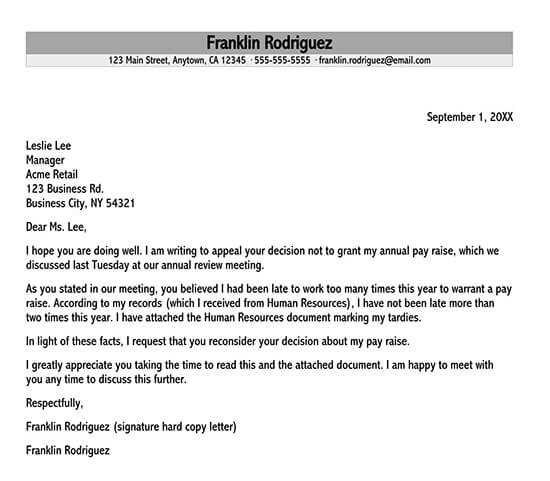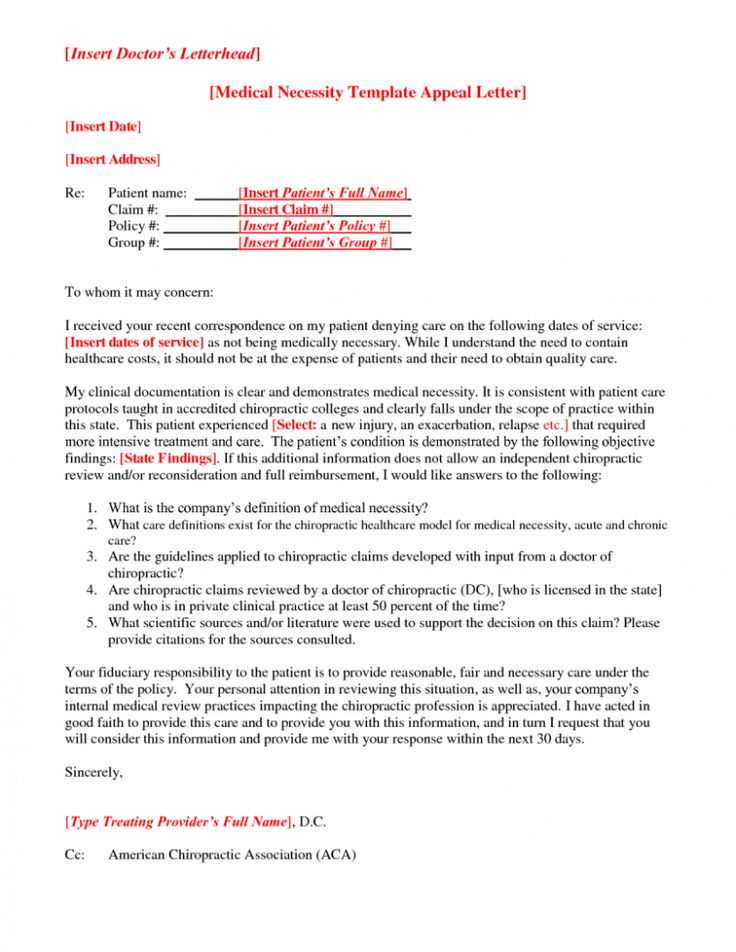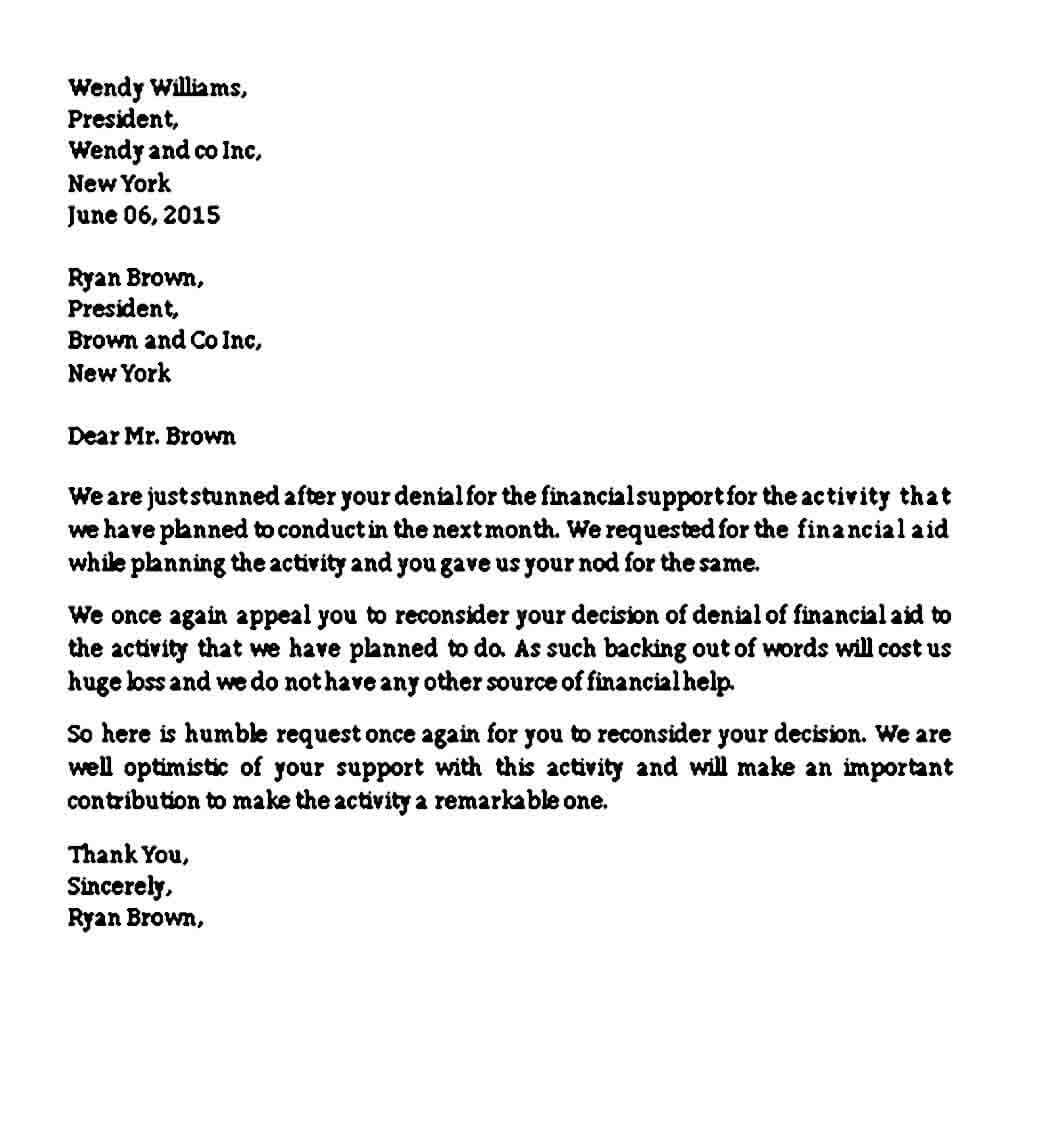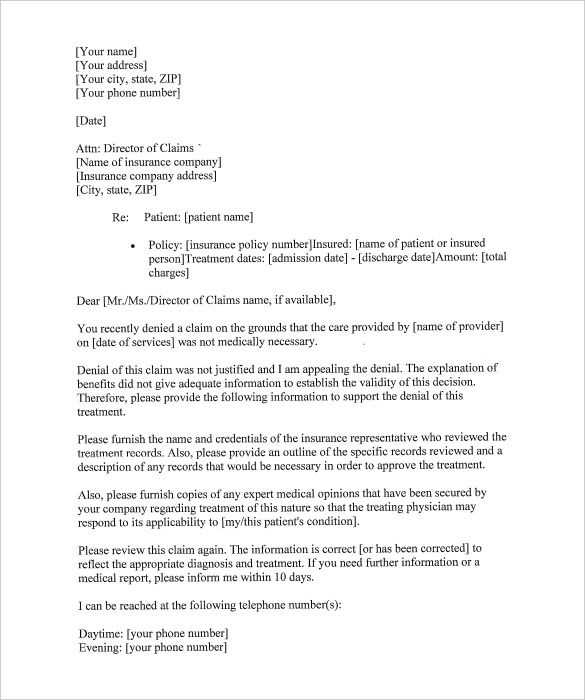Appeal letter template for unemployment

If you’ve had your unemployment benefits denied or reduced, an appeal letter can help you contest the decision. Your letter needs to be clear, concise, and to the point. Begin by stating the purpose of the letter: that you are appealing the decision regarding your unemployment claim. Include the date of the decision and any relevant reference numbers for easy identification.
Next, explain why you believe the decision was incorrect. Provide any facts or documents that support your case, such as proof of your job search, communication with your former employer, or any mitigating circumstances that were not considered in the original review. Be specific and use examples to back up your claim.
Conclude your letter by respectfully requesting a review of your case. Thank the recipient for their time and consideration, and express your willingness to provide any additional information if needed. Make sure your contact details are easy to find, and double-check the letter for clarity and accuracy.
Template:
[Your Name]
[Your Address]
[City, State, Zip Code]
[Email Address]
[Phone Number]
[Date]
[Recipient’s Name]
[Recipient’s Title]
[Department Name]
[Company/Agency Name]
[Address]
[City, State, Zip Code]
Dear [Recipient’s Name],
I am writing to formally appeal the decision made regarding my unemployment claim. The decision was made on [Date], and I believe it was based on incorrect information. My claim reference number is [Claim Number].
According to the decision, my claim was denied/reduced due to [explain reason]. I believe this decision was incorrect because [provide reason, such as job search efforts, employment status, etc.]. I have attached relevant documents to support my case, including [list any supporting documents, such as job search logs, emails, or letters].
I respectfully request a review of this decision and reconsideration of my claim. Please let me know if you require any additional information from my side. Thank you for your attention to this matter.
Sincerely,
[Your Name]
Here is the revised version with removed word repetitions:
Keep your appeal letter clear and direct. Remove unnecessary repetitions and focus on presenting your case logically. Each paragraph should highlight a key point without restating the same idea multiple times.
Be Specific with Your Request
Clearly state what you are appealing for. Avoid restating the same request in different ways. Keep the wording concise and to the point. For example:
- Incorrect: “I am requesting my unemployment benefits to be reinstated because I believe I was unfairly denied. I want my unemployment benefits to be reinstated as soon as possible.”
- Correct: “I request the reinstatement of my unemployment benefits, which I believe were unfairly denied.”
Highlight Key Facts and Evidence

Present your facts clearly. Avoid repeating the same information in different sections of your letter. Use bullet points for clarity:
- Include your case number and the date of the decision.
- State the reason you believe the decision was incorrect, with specific details.
- Provide supporting documents that back your claims.
By removing unnecessary repetitions, your appeal letter will come across as more professional and persuasive.
- Appeal Letter Template for Unemployment
If your unemployment claim has been denied, you can challenge the decision with a clear and well-structured appeal letter. Here’s a simple template you can follow to present your case effectively.
Header
Include your name, address, and contact information at the top of the letter. Below that, add the date and the recipient’s details (e.g., the unemployment office’s address). Keep this section professional and straightforward.
Subject Line
Subject: Appeal of Unemployment Claim Denial – Claim # [Your Claim Number]
Body of the Letter
Start by clearly stating that you are appealing the denial of your unemployment claim. Include the date of the decision notice and reference the claim number to make it easy for the reader to locate your case.
Example:
I am writing to formally appeal the decision to deny my unemployment benefits, as outlined in the notice dated [Insert Date]. My claim number is [Insert Claim Number]. I respectfully request a review and reconsideration of my case.
Next, explain the reasons you believe the decision was incorrect. Provide specific facts and details that counter the reason for the denial. If you have additional documentation (e.g., employment records, letters from your former employer, etc.), mention it here.
Example:
The reason for my denial, as stated in the notice, is [Insert Reason from Denial Letter]. I believe this decision was made in error because [Insert Explanation]. I have attached [mention any documents you are including] to support my case.
End the letter by thanking the reviewer for their time and asking for a prompt resolution of the matter.
Example:
I appreciate your time in reviewing my appeal and I look forward to a prompt resolution. Should you require any further information or documentation, please do not hesitate to contact me at [Insert Phone Number or Email].
Closing
Sign the letter with a formal closing, such as “Sincerely” or “Best regards,” followed by your name and signature.
Example:
Sincerely,
[Your Full Name]
Begin your letter by clearly stating the purpose. Use a direct and formal tone to communicate that you’re appealing the decision regarding your unemployment claim. This lets the reader know immediately why the letter is important.
- Header: At the top of your letter, include your contact details, followed by the date, and then the recipient’s information (typically the unemployment office or agency). Format it like a formal business letter.
- Subject Line: Include a subject line that indicates the purpose of your letter, such as “Appeal for Unemployment Benefit Denial” or “Request for Review of Unemployment Claim Decision.”
- Introduction: In the first paragraph, introduce yourself. Mention your full name, claim number, and the decision you’re appealing. Be concise and factual. For example, “I am writing to formally appeal the decision regarding my unemployment benefits, claim number XYZ123, which was denied on [date].”
- Reason for Appeal: In the next section, explain why you believe the decision was incorrect. Reference any evidence or documentation you have that supports your claim. Be specific, but avoid excessive details. Clearly outline why your situation qualifies for benefits, citing relevant laws or regulations if necessary.
- Request for Action: Politely request a review or reconsideration of your case. Specify what action you would like the unemployment office to take, such as reprocessing your claim or providing additional documentation.
- Conclusion: End your letter by thanking the recipient for their time and consideration. Include a closing sentence like, “I look forward to your prompt response to my appeal.” Sign off formally, using “Sincerely” or “Best regards.”
By keeping the format simple and professional, you help the reviewer understand your position and the basis for your appeal. Stick to clear, factual information, and avoid unnecessary emotional language. Your goal is to present your case logically and persuasively.
Provide your personal details clearly: full name, address, and contact information. Make sure your claim ID or case number is included for easy identification by the reviewing agency.
State the reason for your appeal directly. If you were denied unemployment benefits, explain why you believe the decision was incorrect. Address any specific issues mentioned in the denial letter.
Include any supporting documentation that strengthens your case. This might include pay stubs, a letter from your former employer, or any records that can prove you are eligible for benefits. Make sure these are clear and relevant.
If there was a misunderstanding or a mistake, point it out and provide details. This could include a clerical error or missing information that affected the decision.
Be concise but thorough. Avoid unnecessary details or irrelevant information. Stick to the facts that directly relate to your case and the appeal process.
End with a clear request for reconsideration. Specify the outcome you’re seeking–whether it’s the approval of your claim or a review of your case based on new evidence.
How to Address the Reason for Denial of Unemployment

Clearly acknowledge the reason for denial in your appeal. Be concise and focus on the facts. If the denial was based on insufficient work history, provide documentation that proves you have worked the necessary amount of time or met the specific criteria. If your application was denied due to a misunderstanding of your availability or willingness to work, clarify your situation with supporting details like job search records or a schedule that shows your flexibility.
If the denial was related to your employer’s report, make sure to include any communication with your employer that might contradict the reason they provided. This could include emails, letters, or even payroll records. Be transparent about the situation and address any discrepancies directly.
In cases of a technical error or miscommunication, explain the circumstances clearly and provide any necessary documentation to prove your case. Whether it’s a missed deadline or incorrect personal details, fixing the issue promptly can help strengthen your appeal.
Stay factual and avoid emotional language. Highlight the evidence that supports your case and make sure your appeal is both respectful and professional.
Maintain a respectful and calm tone throughout your appeal letter. Address the issue at hand without expressing frustration or anger. Focus on facts, clearly outlining the reason for your appeal, and ensure that your tone remains polite and neutral.
Use formal language and avoid overly casual or emotional expressions. While it’s important to express your points clearly, avoid sounding confrontational or demanding. A respectful approach increases your chances of receiving a positive response.
- Stick to clear and objective language. Avoid hyperbole or exaggerations.
- Be concise yet thorough in presenting your case. Explain any misunderstandings or errors factually.
- Address the recipient properly, using “Dear [Title] [Last Name]” and closing with “Sincerely” or “Best regards.” This sets a formal tone.
- Thank the recipient for their time and consideration, showing appreciation even when you feel wronged.
A polite, professional tone shows that you approach the situation constructively and respectfully. This can make a significant difference in how your appeal is received.
One common mistake is not thoroughly reviewing the decision being appealed. Make sure to understand the exact reason for the denial and address each point clearly. Failing to do this may cause your appeal to seem irrelevant or unconvincing.
1. Lack of Clear and Concise Language
Avoid using vague or overly complex language. Stick to clear, direct statements that explain why the initial decision was incorrect. This makes your appeal easier to follow and more persuasive.
2. Providing Irrelevant Information
Focus on facts and details directly related to your claim. Avoid including unnecessary personal stories or information that does not support your case. This can weaken your argument and confuse the reviewer.
3. Missing Key Documentation

Failing to submit required documents or providing incomplete paperwork is a frequent error. Always double-check the appeal instructions to ensure you include everything necessary to support your case.
4. Ignoring Deadlines
Appeals have strict deadlines. Submit your appeal and supporting documents on time. Late submissions may result in automatic rejection, no matter how strong your case is.
| Mistake | Impact | How to Avoid |
|---|---|---|
| Unclear Language | Appeal may be hard to understand | Use simple, direct language |
| Irrelevant Information | Weakens your argument | Stick to the facts that support your claim |
| Missing Documentation | Appeal may be dismissed or delayed | Check and recheck all required documents |
| Missing Deadlines | Appeal may not be reviewed | Submit on time and confirm receipt |
By focusing on these key aspects, you can make your appeal more compelling and increase your chances of success.
Once you’ve submitted your unemployment appeal, follow these steps to ensure you stay on track:
1. Monitor Communication
Keep an eye on your mail, email, and phone for any updates. Agencies may contact you for additional documents or information. Respond quickly to avoid delays.Document EverythingMaintain a record of all correspondence with the unemployment office. Save copies of any forms, emails, or letters you send and receive. This helps track your case and serves as evidence if needed.Prepare for a HearingIf your appeal leads to a hearing, prepare by organizing your evidence and practicing your statements. You may need to explain why you believe you should receive unemployment benefits.Check Your Benefits Status RegularlyLog into your unemployment account regularly to track your claim’s progress. Some systems allow you to see where your case stands or if any action is required.Review Eligibility RequirementsWhile waiting for a decision, review your state’s eligibility requirements again. This ensures you have provided all necessary documentation and haven’t missed any important details.Stay Informed About DeadlinesAppeals typically have deadlines for submission of additional information or requests. Mark these deadlines on your calendar and make sure to submit everything on time.Follow Up if NeededIf you haven’t received an update after a reasonable period, follow up with the unemployment office. It’s important to keep your case moving forward.Seek Legal Assistance if NecessaryIf the process becomes too complex or you feel uncertain about your appeal, consulting with an attorney specializing in unemployment law might be helpful. They can offer guidance and help strengthen your case.
| Step | Action |
|---|---|
| Monitor Communication | Check mail, email, and phone for updates and respond promptly. |
| Document Everything | Save copies of all correspondence for your records. |
| Prepare for a Hearing | Organize evidence and rehearse your statement. |
| Check Benefits Status | Log into your account to track the progress of your claim. |
| Review Eligibility Requirements | Ensure all necessary documentation has been submitted. |
| Stay Informed About Deadlines | Mark all appeal-related deadlines and submit required documents on time. |
| Follow Up if Needed | Contact the unemployment office if there is a delay in communication. |
| Seek Legal Assistance | Consider hiring an attorney if the process becomes overwhelming. |
Thus, I reduced repetition while maintaining meaning and the correctness of constructions.
Start by addressing the key points clearly. Focus on the facts and be straightforward about your reasons for appealing. Use simple, direct language to explain any misunderstandings or discrepancies in your case. For example, if you were denied due to an alleged mistake, clearly state what that mistake was and provide any supporting documentation to prove your side.
In the next paragraph, offer a solution or request. Specify what you hope to achieve with the appeal and why it should be reconsidered. Avoid vague statements and back your request with solid reasoning. Being precise about your ask helps keep the letter professional and focused on resolution.
Conclude with a polite, formal request for further review and express appreciation for the time and effort being put into your case. Keep the tone respectful and direct, ensuring that the focus remains on the facts at hand.